16, after embracing the Catholic priest who he said played a crucial role in helping tens of thousands of East Germans escape to the West, 15 years ago.
"It wasn’t political actors on the world stage who started things off, but men like you," he told Father Imre Kozma, a key organizer of four makeshift refugee camps in Budapest.
The camps housed some 50,000 East Germans from August to November 1989, when Hungary became the first Soviet sattelite state to allow them to flee to the West. Schroeder also visited a recently unveiled memorial next to Father Kozma’s Holy Family Church in Budapest where thousands of East Germans, including women and children, were initially put up in military-style tents as organizers believed Communist security forces would be reluctant to raid the church ground.
The chancellor laid a wreath at the sculpture which shows two people standing on a cracked foundation, embracing over its divide, seen as a symbol of German-Hungarian friendship and reconciliation.
"Fifteen years ago a miracle happened here. We were only offering shelter to people, but politicians, at the same moment, were starting to reconcile differences," Father Kozma reportedly told him.
PLASTERED TRABANT
Schroeder also posed in front of two pieces of the Berlin Wall planted there, near an old East German communist-era Trabant car plastered with newspaper clippings from 1989. His meeting with Kozma came a day after a honor guard marched in front of Hungary’s gothic parliament building to mark what Schroeder described as Hungary’s "historic decision" to open a chink in the Iron Curtain.
He was escorted by outgoing Hungarian Prime Minister Peter Medgyessy, who was deputy prime minister in the reformist Communist government that opened Hungary’s border to Austria for the refugees, despite threats from what was then Communist East Germany, which was at the time Hungary’s Warsaw Pact ally.
At a news conference, Schroeder praised Hungary’s "historic decision", , on September 11, 1989, to allow East German asylum-seekers to cross to the West. What was then West Germany granted automatic citizenship to East Germans who escaped.
BERLIN WALL
The move is considered to have paved the way for the fall of the Berlin Wall, two months later, and the subsequent demise of communism and dissolution of the Soviet-led Warsaw Pact. East and West Germany were united in 1990.
"I am pleased that my visit takes place at a time when we remember that the government, in which you [prime minister] took part, made a decision fifteen years ago of world importance." he said. "We will never forget that, especially if disagreements arise in the future."
Referring to a point of friction, the chancellor made clear that his appreciation for Hungary does not mean Hungarian workers can now flood Germany. Although Hungary became part of the European Union this year along with nine other countries, Schroeder said Germany cannot allow unlimited access to its market.
HIGH UNEMPLOYMENT
"Hungary has an unemployment rate of 5.6 percent," said Schroeder. "Germany has an unemployment rate of over nine percent," he explained. "Hungary needs its own working force, and when you look to the Hungarian economic situation, there are already shortages of employees in important sectors of society."
The statement came as a disappointment for Prime Minister Medgyessy, whose government had hoped that Hungary’s role in the collapse of Communism would encourage Germany to have more flexible labor policies. Despite the disagreements, German Chancellor Schroeder made clear that Hungary’s aid for East German refugees, had brought the countries closer together.
Some East Germans still return to Hungary, but, now, as tourists.






